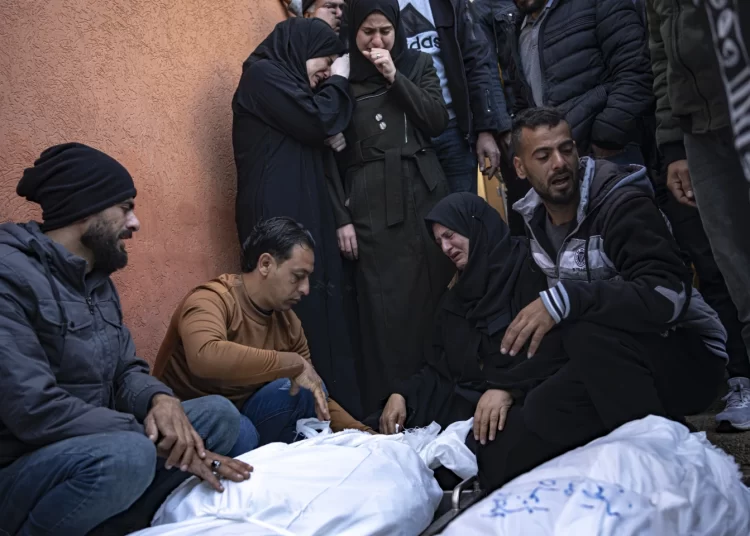Israel pounded targets in the southern Gaza Strip on Saturday, intensifying a renewed offensive that followed a week long truce with Hamas and giving rise to renewed concerns about civilian casualties.
At least 200 Palestinians have been killed since the fighting resumed Friday morning, according to the Health Ministry in Hamas-run Gaza, even as the United States urged ally Israel to do everything possible to protect civilians.
“This is going to be very important going forward,” Secretary of State Antony Blinken said Friday after meetings with Arab foreign ministers in Dubai, wrapping up his third Middle East tour since the war started. “It’s something we’re going to be looking at very closely.”
Many of Israel’s attacks Saturday were focused on the Khan Younis area in southern Gaza, where the military said it had struck more than 50 Hamas targets with airstrikes, tank fire and its navy.
The military dropped leaflets the day before warning residents to leave but, as of late Friday, there had been no reports of large numbers of people leaving, according to the United Nations.
“There is no place to go,” lamented Emad Hajar, who fled with his wife and three children from the northern town of Beit Lahia a month ago to seek refuge in Khan Younis.
“They expelled us from the north, and now they are pushing us to leave the south.”
Israel’s military said it also carried out strikes in the north, and hit more than 400 targets in all across the Gaza Strip.
Some 2 million people — almost Gaza’s entire population — are crammed into the territory’s south, where Israel urged people to relocate at the war’s start and has since vowed to extend its ground assault. Unable to go into north Gaza or neighboring Egypt, their only escape is to move around within the 220-square-kilometer (85-square-mile) area.
In response to US calls to protect civilians, the Israeli military released an online map, but it has done more to confuse than to help.
It divides the Gaza Strip into hundreds of numbered, haphazardly drawn parcels, sometimes across roads or blocks, and asks residents to learn the number of their location in case of an eventual evacuation.






Discussion about this post